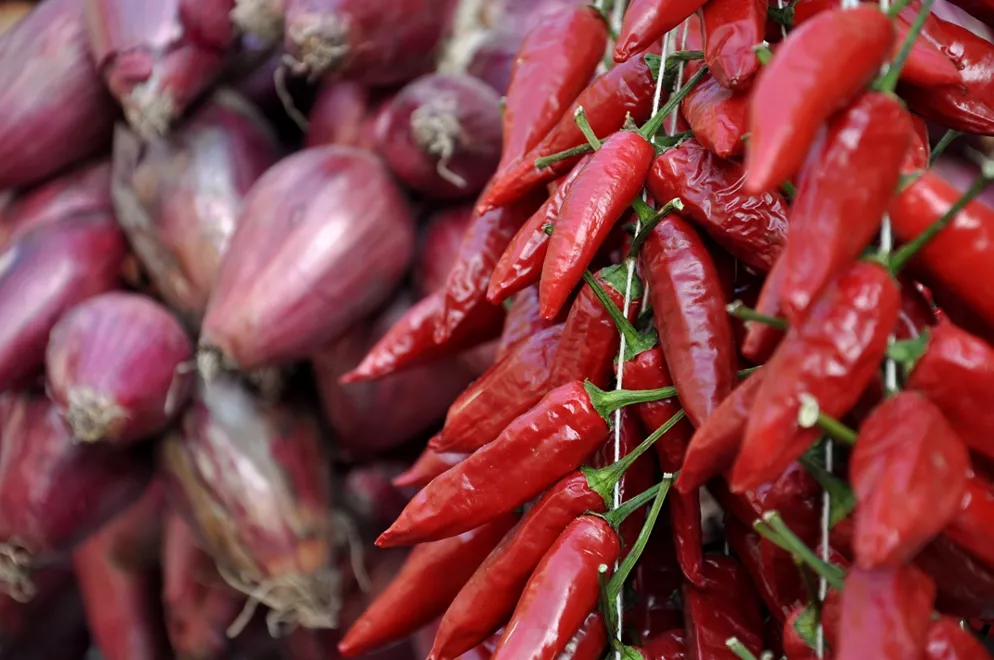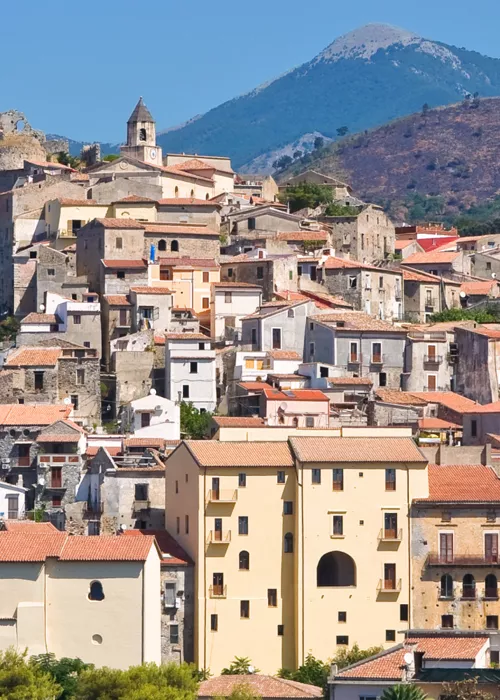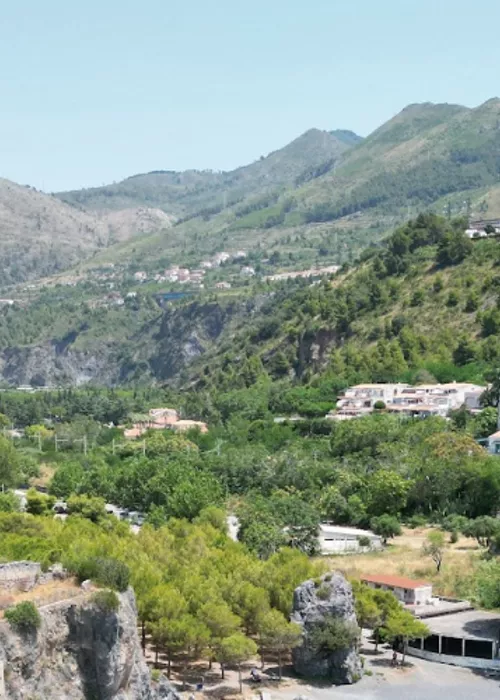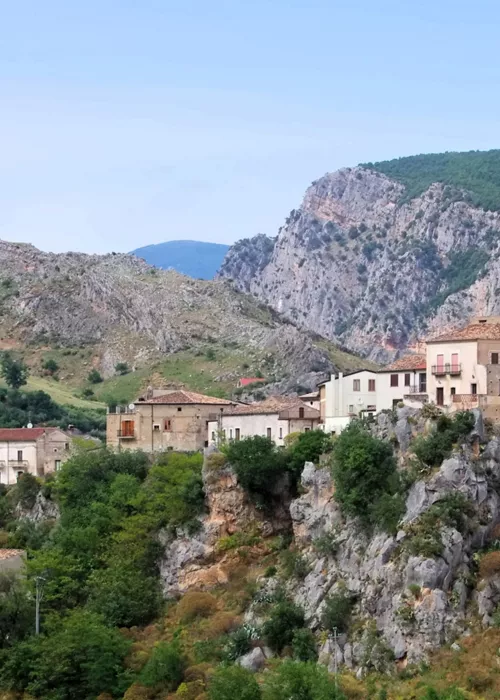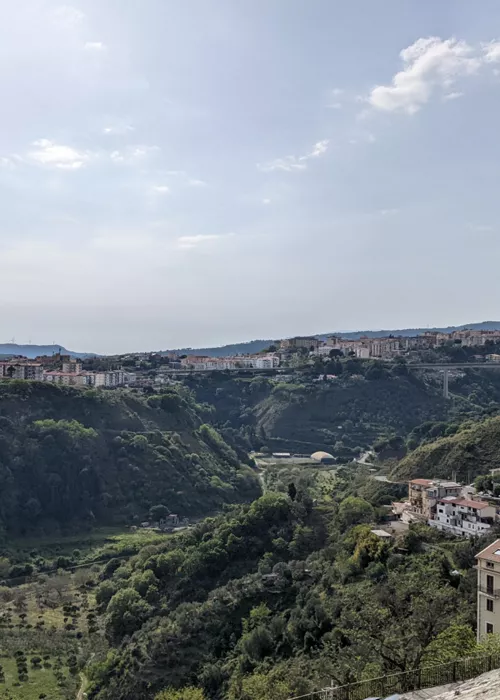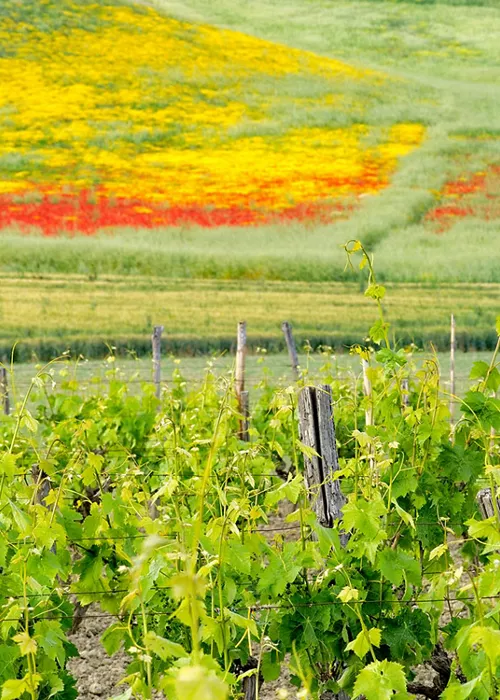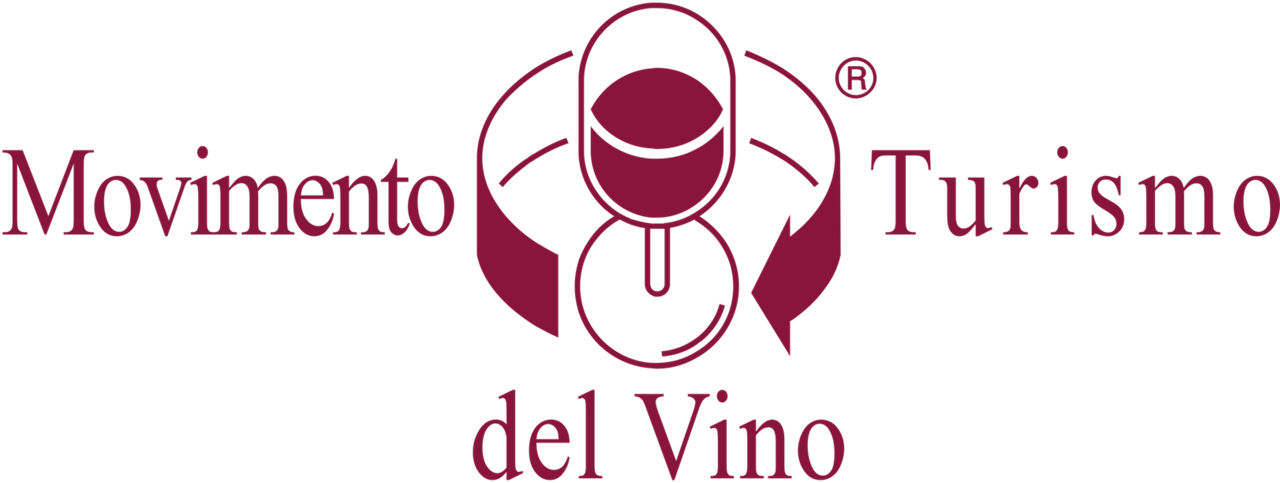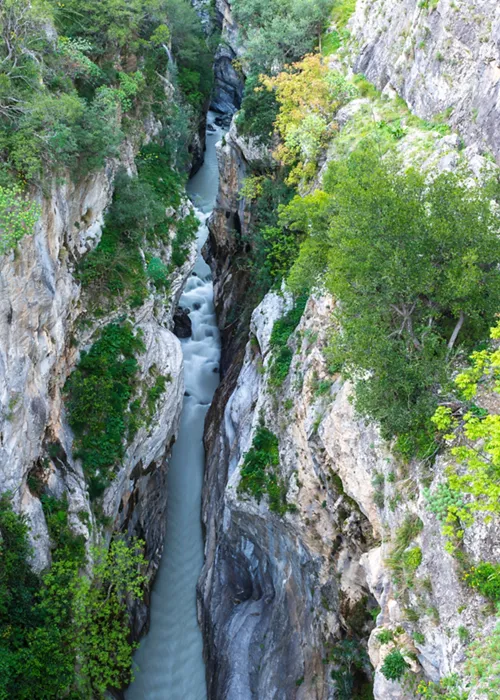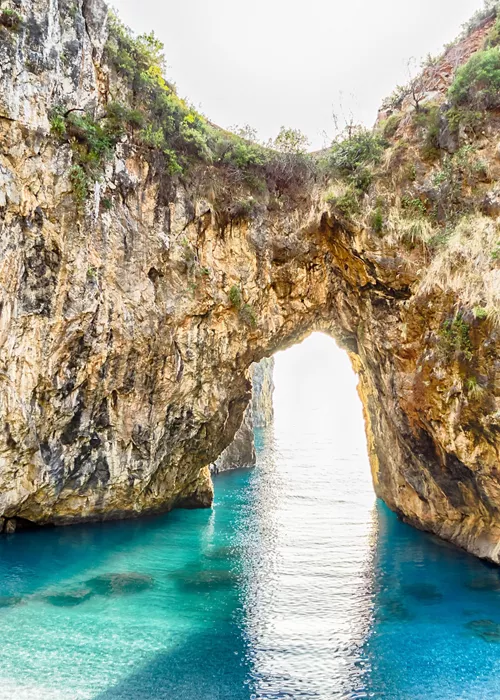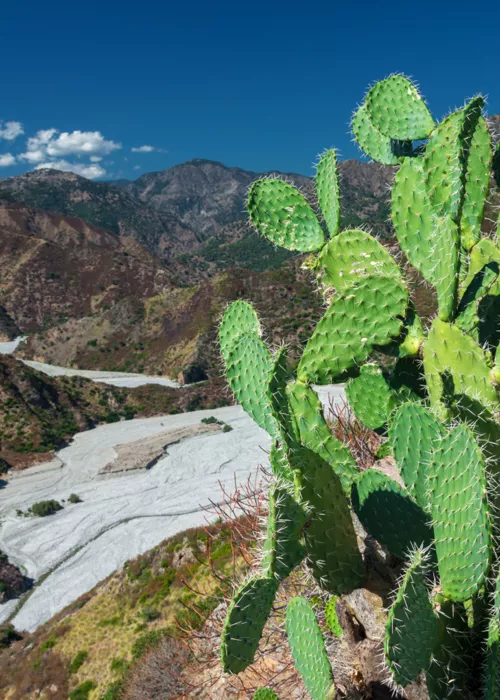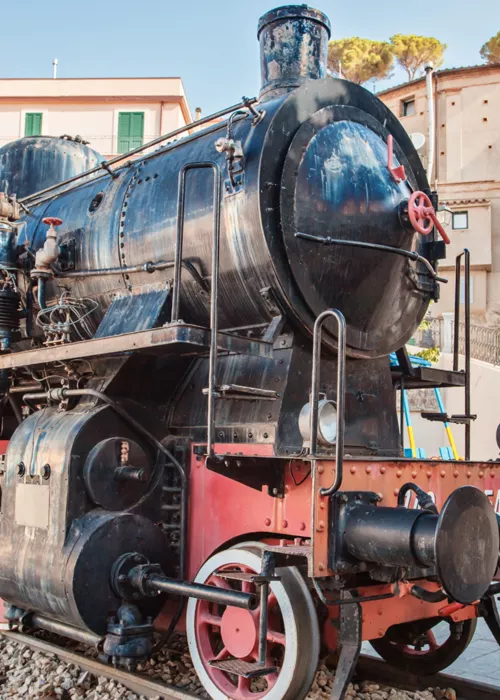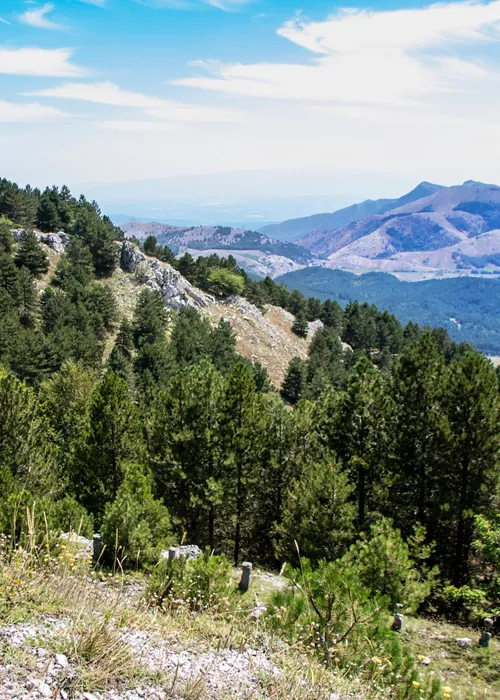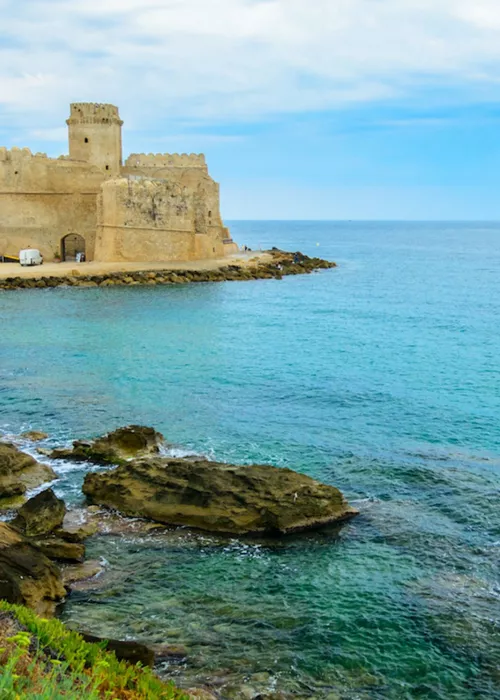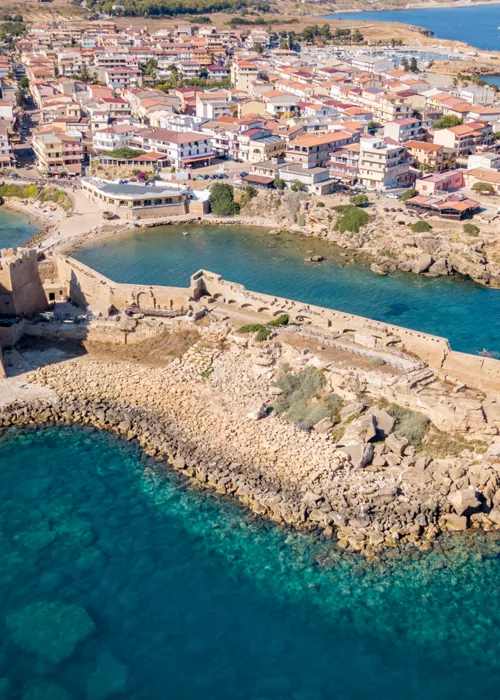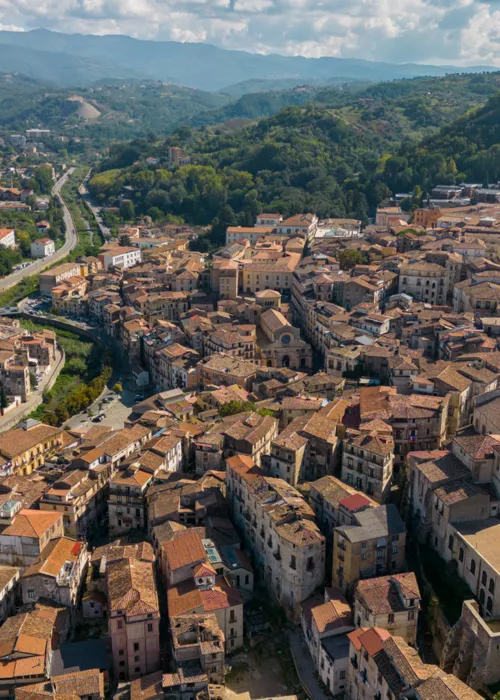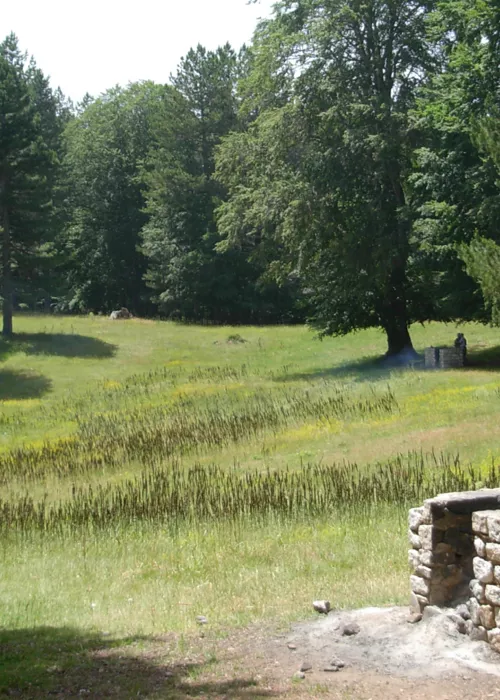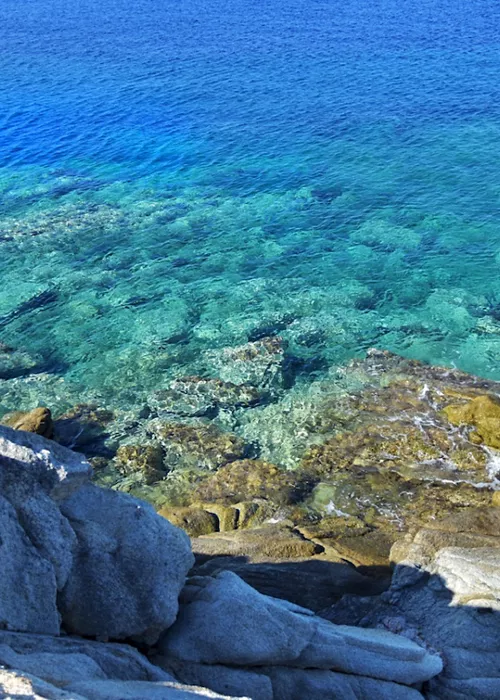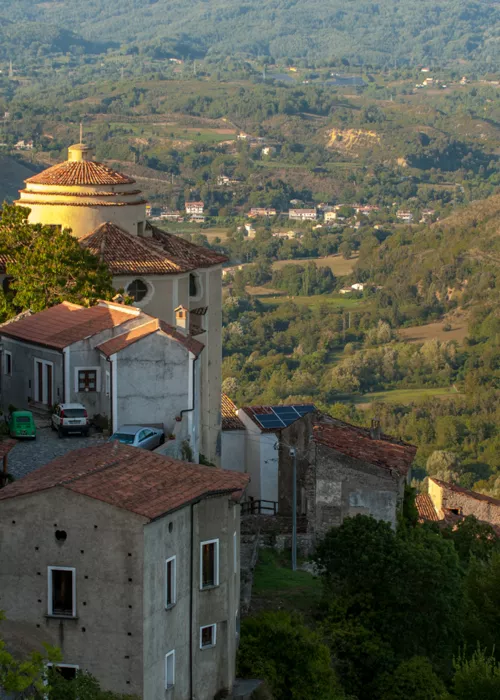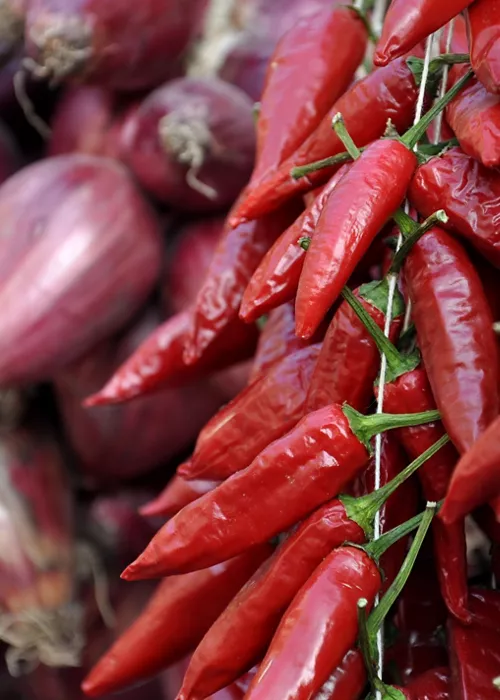Calabria and Its Peperoncino
3 minutes
Diamante is the capital of the chilli pepper, so much so that it has dedicated an academy to the piparedduzzu (chilli pepper in local dialect) that organizes what is now an internationally-acclaimed annual festival in September: Cinema, art, culture, meetings, debates, satire, music, fashion shows, street performances and lots of food and wine where red gold is always included.
This journey starts out in Diamante, the garden of citrons, 8 km of beach and crystal-clear sea and alleyways cheerfully painted with murals. Visitors in this charming little town should try the many sauces and famous n’duja. It’s a sausage flavoured with chilli pepper and is perfect as an appetizer or to season first courses. Lastly, tourists should head to Maierà (8 km from Diamante), where Palazzo Ducale hosts the Museo del Peperoncino (Museum of the Chilli Pepper).
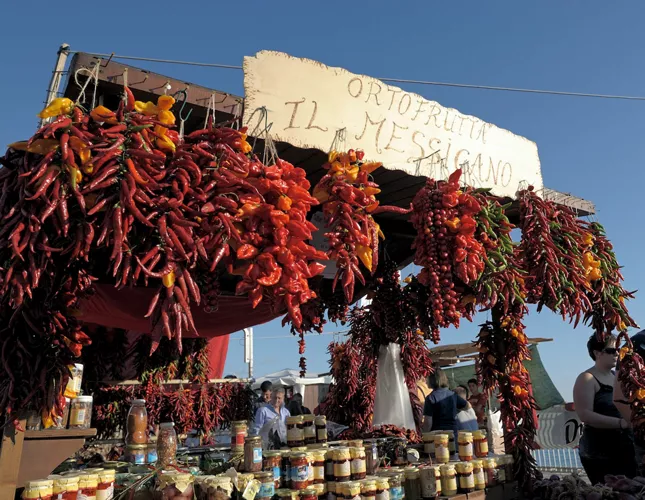
Continuing north are many popular beaches: Scalea, with its ancient terraced village, Praia a Mare surrounded by citrons, charming Dino Island home to the sanctuary of Madonna della Grotta with its magnificent view of the coast.
Cross the Parco Nazionale del Pollino and its particularly rugged nature to get to Castrovillari, where there is a majestic Aragonese castle dating back to 1490. This is one of the places where park excursions start from (from Calabria - remember the park is also located in Basilicata).
So if over the sea you prefer the mountains, where you can participate in many sports (hiking, mountain biking, mountaineering, canyoning, rafting, potholing and cross-country skiing in the winter), you should truly visit this park and reserves where there are numerous campgrounds, refuges and bivouac shelters. Areas include the Lao River Valley, Raganello gorges, and the Argentino River Valley.
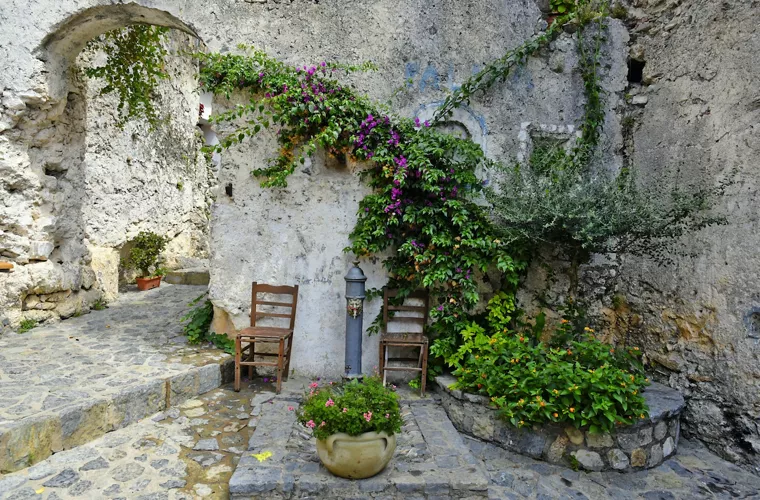
The protected area has also been home to the Arbëresh communities (of Albanian origin) for over 500 years. They settled in Calabria and Basilicata between 1470 and 1540 to escape from the Turks. The following are some of the small towns worth visiting: Acquaformosa, Civita (where there is a museum of the Arbëresh civilization), San Basile, Lungro, Plataci and Frascineto. Make sure to participate in the charming services sung according to Greek-Byzantine rite.
From the mountain to the city, visitors arrive in Cosenza. This county town is home to a charming old town centre, picturesque Corso Mazzini and a view over the Crati and Busento rivers. After touring the duomo (cathedral), enjoy a meal where Calabria’s strong flavours once again are the focus and where the speciality is mùstica. This is small fish covered with chilli peppers, dried under the sun and preserved in oil.
Our journey concludes back on the Tyrrhenian coast in Paola, where Calabria’s patron saint San Francesco di Paola is celebrated from 1 - 4 May. Numerous faithful come from all over Italy for the celebrations, and sleep outdoors and sing and play instruments. The event culminates in a procession with a statue of the saint. It unwinds down an avenue with several majolica aediculae depicting the miracles of San Francesco. The first stop is the convent where the relics of the saint are kept in the Gothic church. The procession then makes its way to the beach in the afternoon, for the blessing of the boats. Midnight fireworks mark the end of celebrations.
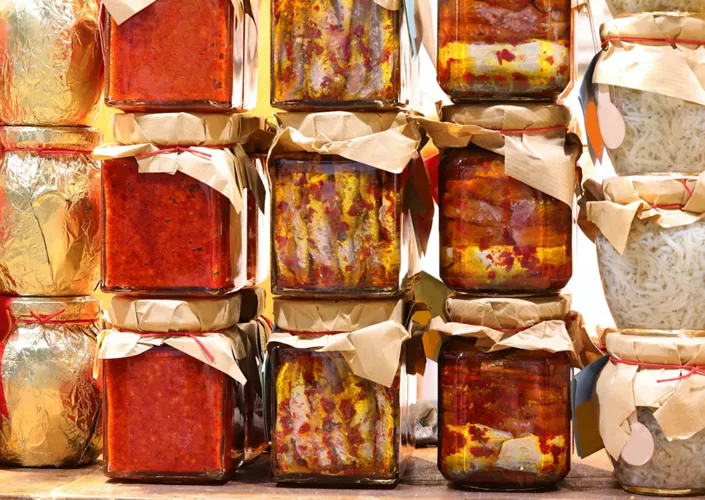
The fabrics in the small Arbëresh communities are quite unique (tapestries, knapsacks and aprons made with broom fibre). However, the art of weaving is very common throughout the region.
Typical food and wine products: In addition to chilli pepper, there are many excellent sausage varieties (the soppressata or dry salami is extremely spicy), pecorino cheese, ricotta cheese and citron (candied or as a liqueur, which is a specialty of Diamante). Citron is also used to make panicilli, that is raisin bundles wrapped in citron leaves. Quality wines: Donnici, Pollino and Savuto (red wines).

